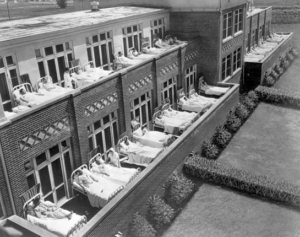
Design Pitfalls in Biocontainment Laboratories: Lessons from Real Projects
Building a biocontainment laboratory—whether BSL-3, ABSL-3 or ACL-3, is a highly specialized process that requires careful planning and coordination. When design decisions are made without early input from Subject Matter Experts (SMEs), critical issues often surface late in the project, leading to costly changes and delays. Below are examples of common challenges identified during design reviews and commissioning phases. These illustrate why early integration of biosafety and engineering expertise is essential. Example 1: Missing Containment Features In one recent project, a design review uncovered a critical oversight. The Basis of Design (BOD)—the document outlining the institution’s requirements for the laboratory—specified that the facility would support research involving avian influenza. However, the design did not include provisions for a shower-out protocol or the necessary plumbing infrastructure to accommodate a future effluent decontamination system, both of which may be required by evolving regulations. This omission significantly limited the laboratory’s operational capabilities, restricting it to work with agents that do not require a shower-out process. Ultimately, substantial redesign was needed to bring the project back into alignment with the BOD and ensure long-term compliance and flexibility. Other issues included: In a BSL-3 setting, undefined personnel pathways and workflows create unclear boundary separations, increasing the risk of containment breaches, procedural confusion, and noncompliance biosafety requirements. Insufficient clearance for biosafety cabinets (BSCs) in isolation spaces. Doors swinging against intended airflow direction. Use of inappropriate sealing materials for penetrations. Inclusion of a fume hood for chemical work instead of a Class II Type B2 BSC. Incomplete risk assessment during early design phases. Insufficient attention to maintenance access and laboratory equipment placement. Structural limitations in the room envelope made it unable to safely tolerate deep negative pressure conditions. Impact: These oversights affected containment integrity and workflow efficiency, requiring structural changes late in the process. Example 2: Airflow and Equipment Integration During commissioning of a facility under construction, several design gaps were identified: A BOD change required upgrading the Class II BSC from Type A2 to Type B2, but the existing exhaust fan curves could not support the increased airflow demand. Lack of exhaust ducting over the autoclave chambers to manage heat and connecting to the BSL-3 exhaust ductwork. Freezer placement in a concentrated area not accounted for in the air distribution. Provision for decontaminating large equipment before removal. Autoclave bioseal ordered for the wrong side with the master control on the wrong side. Impact: These issues prolonged commissioning, delayed the project schedule, and resulted in substantial change-order claims. Example 3: HVAC and Containment Compliance In another case, evaluation of arthropod containment labs revealed: Omission of supply and/or exhaust air in anterooms. Misinterpretation of containment guidelines led to improper combining of BSL-2 and BSL-3 exhaust ductwork. Non-airtight ceiling access doors and introducing unaccounted infiltration affecting directional airflow. HVAC airflow reversals during failure testing created unacceptable containment risks. Impact: These deficiencies increased the risk of containment loss, with airflow reversals posing the greatest safety threat and pest intrusion creating major USDA compliance concerns. Top 6 Design Principles for Biocontainment Labs To avoid these pitfalls, consider these foundational principles during the earliest stages of design: 1.Define the Research Capabilities of the Laboratory Clearly defining laboratory intent in the Basis of Design is essential to ensure the facility is engineered to meet its functional, safety, and regulatory requirements. 2. Define Containment Boundaries Clearly Establishing primary, secondary, and tertiary barriers in relation to workflow early ensures the laboratory’s containment strategy is clear, coordinated, and integrated into the design from the start. This prevents costly redesigns, reduces construction risk, and supports reliable, compliant biocontainment performance. 3. Plan for Directional Airflow and Pressure Differentials Ensure airflow moves from clean to contaminated areas, with validated pressure relationships and redundancy in HVAC systems. 4. Integrate Equipment into Design Account for biosafety cabinets, autoclaves, and other critical equipment in spatial layouts and airflow calculations to ensure sufficient make-up air and proper cooling and heat-load dissipation. 5. Design for Maintenance and Decontamination Include provisions for safe removal and decontamination of large equipment and keep serviceable maintenance items outside of containment where possible. 6. Follow Risk-Based Guidelines and Standards Align with Biosafety in Microbiological and Biomedical Laboratories (BMBL), NIH Design Requirements Manual, WHO Laboratory Biosafety Manual and other relevant standards to ensure compliance and operational safety from the start. The Bottom Line Early engagement with World BioHazTec’s SMEs ensures: Compliance from the start with WHO, CDC, NIH, ANSI/ASSP Z9.14-2014 and other applicable guidelines. Cost savings by avoiding late-stage redesigns. Operational efficiency through risk-based design and redundancy planning. Don’t wait until commissioning to discover design flaws. Partner with World BioHazTec early and build a laboratory that meets the highest standards of safety and functionality. Ready to start your project right? Contact us for a free consultation.
Read More








